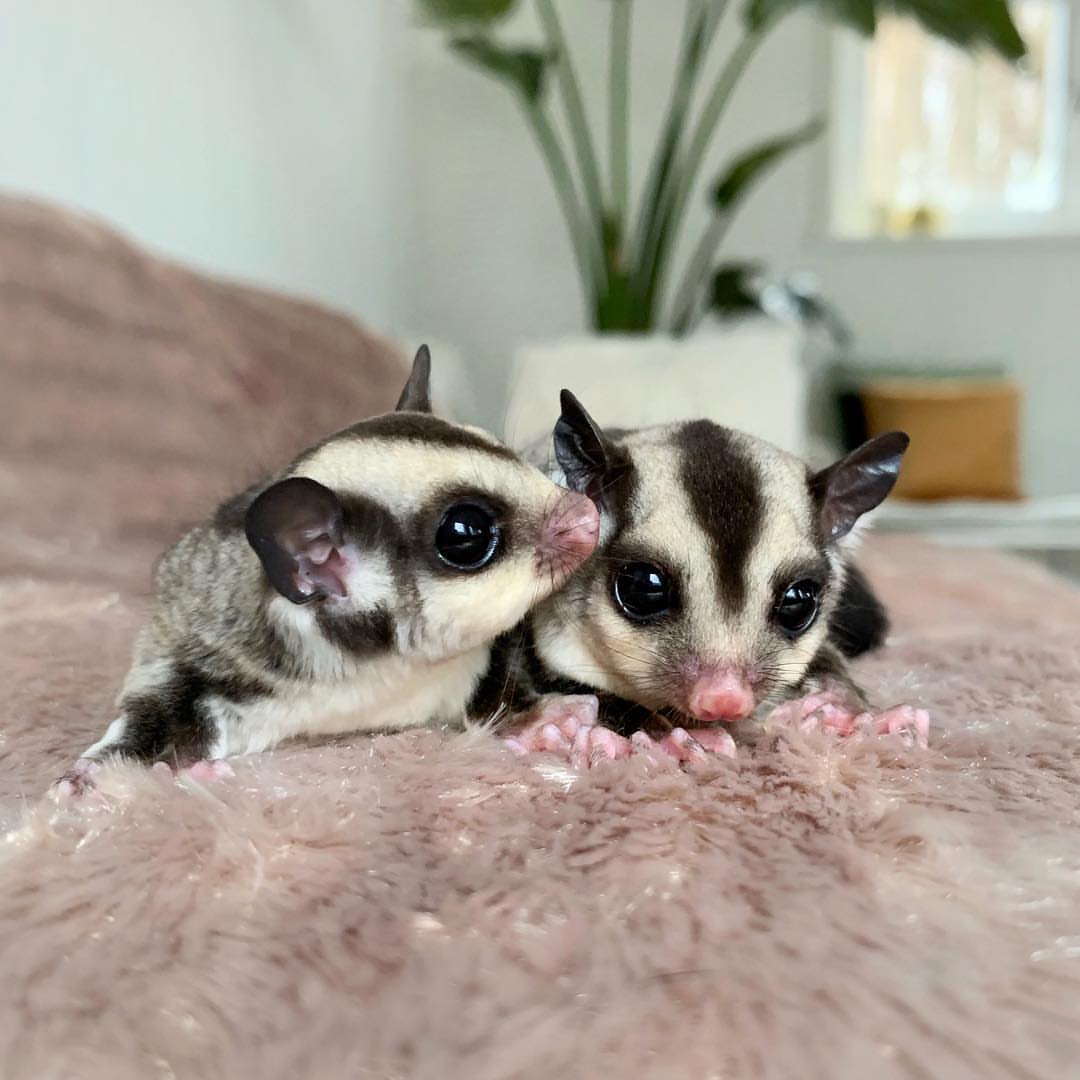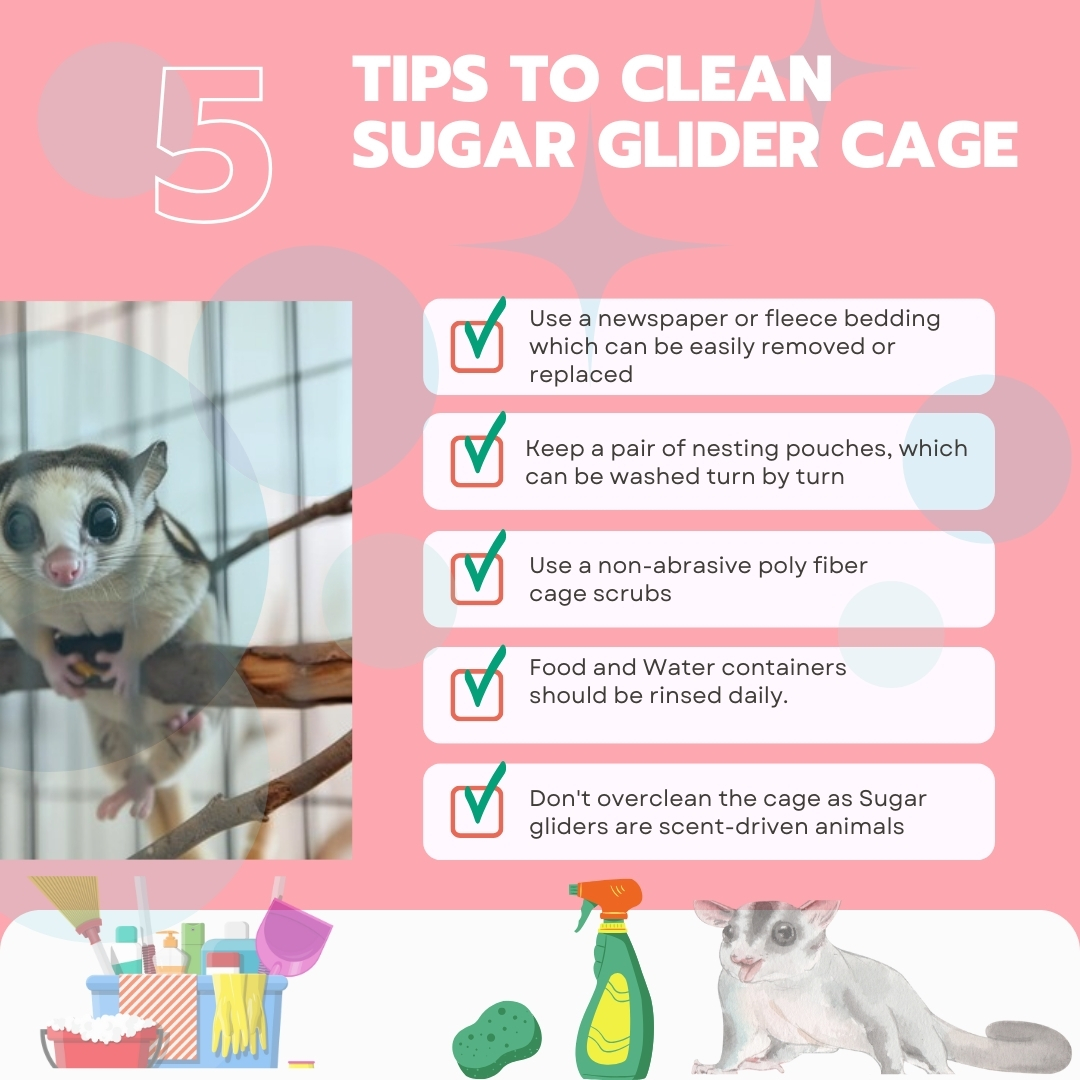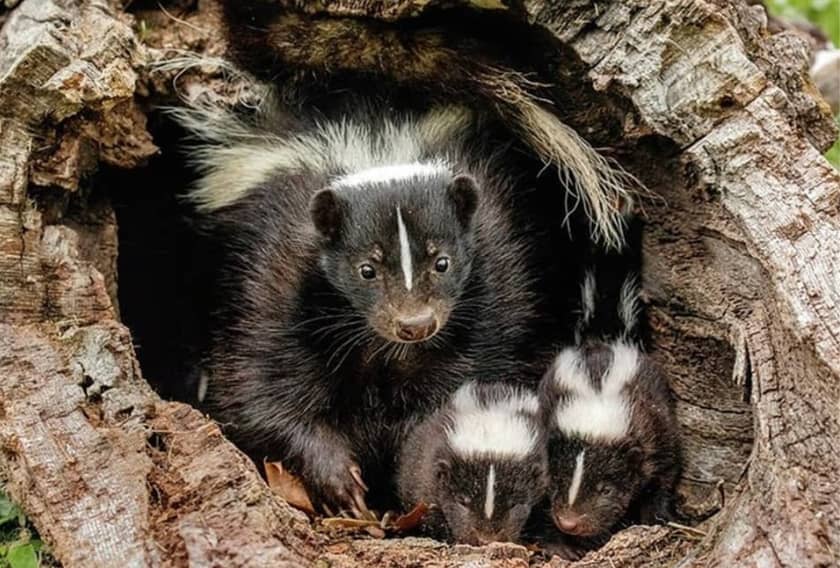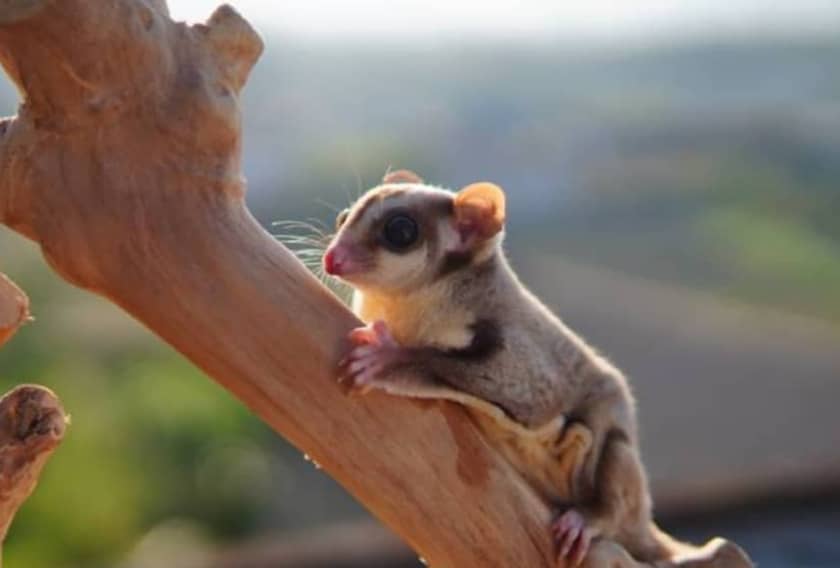The Sugar Gliders’ cage provides the right opportunities to exercise, play, and explore. They need housing that allows them to “glide” over distances. Ideally, the sugar glider cage should be tall rather than wide to allow for climbing, as sugar gliders love to jump and glide.

Cages should be made of PVC-coated wire with plenty of spots for gliders to climb and grab. The glider cage should be at least 36x24x40 inches, with height prioritized over width.
Inside the Cage
The cage should provide an enriching environment for the sugar glider to thrive
- It should include multiple levels or platforms, as well as branches, ropes, and other items.
- Branches and plants are significant for gliders and will allow them room to leap and climb.
- A sleeping pouch or nesting box is essential for them to rest during the day
- The cage should also have space for a food dish, water bottle, and toys to keep them mentally stimulated.
- Use soft, warm materials inside the cage, like fleece. Avoid anything with sharp edges or small holes that could hurt or trap the babies.
How to Set Up a Sugar Glider Cage?
The cage of the sugar glider should be of an appropriate size and equipped with comfortable bedding, food, and water bowls. By following these steps, you can create a safe, and comfortable environment for your sugar glider.

Size and Space Requirements
The sugar glider’s cage should be 24 inches deep by 24 inches wide by 36 inches tall. Sugar gliders are natural climbers and gliders; it’s essential with plenty of vertical space in the cage.
Material
The material should be made of iron, plastic, and metal. Avoid cages with wooden parts because sugar gliders can chew them.
Door
Look for a cage with doors that lock securely, and these are big enough for you to reach in easily.
Temperature
Keep the cage in a room that stays between 60°F to 90°F (21°C to 32°C). Make sure that the room isn’t too hot or too cold.
Humidity
Sugar gliders like the air to be a little moist, but not too much. Keep the humidity between 45-50% and use a humidifier or dehumidifier if needed.
Location
Put the cage in a quiet, safe place, away from direct sunlight and loud noises. Sugar gliders are awake at night, so the room should be dark at night and have light during the day.
Accessories
Sugar gliders love to climb and play, so you should make sure there’s room for toys, branches, and ropes.
Enrichment Activities Of Sugar Gliders
The enrichment activities give your sugar glider mental stimulation and help to improve its life expectancy.
Toys:
Give your sugar glider toys to play with, like small balls, bells, chew toys, and pulley toys hanging near the pouch are very fun, especially for tail carriers.
Climbing:
Sugar gliders love to climb. Add ropes, branches, and ladders in their cage so they can jump and climb around the cage.
Hiding Spot:
Provide little pouches or boxes where your sugar glider can hide and feel safe. They like cozy, dark spaces.
Playtime:
Play with your sugar glider outside the cage. Let them glide or explore safely.
Variety:
Change up the toys and activities regularly to keep things interesting for your sugar glider.
Foraging:
Hide little treats in the cage for your sugar glider to find. It’s like a fun game for them.
Sugar Gliders’ Cages at Different Age
There are several types of cages we need to arrange for sugar gliders.
Cage for Newborn Sugar Gliders
Sugar gliders don’t need a big cage. A smaller cage is better for them to keep safe and close to their parents. Use soft, warm materials inside the cage like fleece. Provide small pouches or nesting boxes lined with soft fleece to stay cozy and safe. Newborns are sensitive to germs, and clean the cage often but gently.
Cage for Juvenile Sugar Gliders
A cage about 2 feet wide and 3 feet tall is good. Sugar gliders need room to climb and explore. It would help if you chose a strong metal cage. and also add ropes and branches at lower levels. Juveniles like to climb but need things close to the ground. We should provide small pouches or hammocks where they can hide and feel safe. Include simple toys like small balls and chew toys.
Adult Sugar Gliders’ Cage
A large cage is best, around 3 feet wide, 3 feet deep, and 4 feet tall. This gives them plenty of room to move. Use a strong metal cage and avoid wood. Include many climbing toys like branches, ropes, and ladders, offer them various toys, and change them regularly.
Senior Sugar Gliders’ Cage
A large cage is still needed, but make sure it’s easy to access and clean. You should use strong metal. Avoid anything they could chew. It also includes an easy-to-access climbing area and ramps and offers simple, gentle toys. Avoid anything too challenging.
Cage for Older Sugar Gliders
A spacious cage is still needed; use strong metal, including a low, easy-to-reach climbing area; and add gentle ramps. Offer simple, soft toys and try to check for wear and tear regularly.
Cost of Setting up Sugar Glider’s Cage
One of the cons of keeping a sugar glider as a pet is the cost. The cost of a cage depends on its material, safety points, and ease of cleaning. The average cost of setting up a Sugar Glider cage is around $400. However, you can reduce the cost by using some DIY cage accessories, such as hammocks and fleece bedding.

Quick Tips to Clean Sugar Glider’s Cage
The cage should be regularly cleaned to maintain hygiene and when your glider is asleep. The spot cleaning should be done on a daily basis, however, deep cleaning can be done every week.
- You should use newspaper or fleece bedding, which can be easily removed or replaced for washing.
- You should keep a pair of nesting pouches, which can be washed turn by turn.
- Food and water containers should be rinsed daily.
- Use non-abrasive poly fiber cage scrubs to remove built-on grime.
- Don’t overclean the cage, as sugar gliders are scent-driven animals and hence need scent marking.

Frequently Asked Questions
Question 1: How many Sugar gliders can be in one cage?
Answer: The minimum cage requirement is 2-3 gliders for any age. In the long run, bigger is always better!
Question 2: Can I build a DIY cage for my sugar glider?
Answer: Yes, you can make a DIY cage by using strong metal frames, and wire mesh with ½ inch-bar spacing. make sure there are no sharp edges.
Question 3: What materials do I need for a DIY Sugar glide cage?
Answer: You will need metal frames, wire mesh, zip ties, and a plastic or metal tray for the bottom. also gather some soft pouches or hammocks for the sleeping area.
Question 4: Should I cover my sugar glider cage?
Answer: You do not need to cover the cage, but if your sugar glider is stressed or the room is bright at night you can cover it with light clothes. just ensure good airflow and avoid overheating.
Question 5: How often should I clean a sugar glider’s cage?
Answer: Clean the cage at least once a week. Remove waste daily and clean food and water dishes regularly.
Question 6: What should I avoid when setting up a sugar glider cage?
Answer: Avoid cages with wooden parts, large bar spacing, or sharp edges. Use soft, warm stuff inside the cage, like fleece.
Question 7:How can I upgrade a starter kit as my sugar glider grows?
Answer: As your sugar glider grows, you can add more climbing toys, large pouches, and more space for them to explore.
Conclusion
Make sure your sugar glider’s cage is roomy, secure, and enhanced with climbing frames and toys to replicate their natural habitat. Maintain hygiene and use proper bedding to avoid health problems. For comfort and seclusion, provide a haven for nesting. You should maintain the safety of your sugar glider by routinely inspecting the cage for wear and tear.


